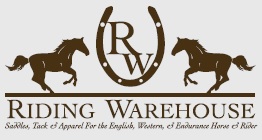Click here to go directly to resource list
After years of maintaining Harvey's hocks with injections and supplements, I vowed that my next horse would not have hock problems. When Riley came under my care as a weanling, I had already read articles on how to promote joint health. Exercise is critical, studies showed. Riley was put out in a huge pasture 24/7 with other babies. Following the recommendations of breeders and nutrition experts, I fed Riley the soy-protein-based Progressive Growth formula in recommended amounts. I monitored his growth rate and condition. He grew, he ate, he pooped, he thrived. All was well until...
The day of the big hock... Fast forward to April of his yearling year. We gelded him early, to avoid the tyranny of male hormones. He was gelded on a damp spring day, and the surgery itself was uneventful. But as he staggered up to his feet post-surgery, I could see that his right hock enlarged (pictured left). He had dropped very gracefully, onto the side of a hill, and no one thought he'd hurt himself going down. At any rate, the swelling looked well-established. But how could I have missed this? I waited a few days for improvement, and then summoned the vet.
Fast forward to April of his yearling year. We gelded him early, to avoid the tyranny of male hormones. He was gelded on a damp spring day, and the surgery itself was uneventful. But as he staggered up to his feet post-surgery, I could see that his right hock enlarged (pictured left). He had dropped very gracefully, onto the side of a hill, and no one thought he'd hurt himself going down. At any rate, the swelling looked well-established. But how could I have missed this? I waited a few days for improvement, and then summoned the vet.  I told the vet about the swelling. The vet asked if he was lame, but it was hard to tell given that he was walkin' funny from the loss of his gonads. Radiographs were taken of both hock joints. The left joint was clear. The right hock x-rays showed a tiny "ding," thought to be a flake of bone, resting on a lower joint. Above that flake, vet saw a suspicious area, a possible lesion, that he speculated might have "spit out" the flake. These flakes are common, they're called joint mice and they float around in joint fluid. Occasionally they land on a joint get get stuck there. To be honest, I'm not sure if the main problem was the lesion, the ding, or both. Whatever. Surgery was the recommended treatment. Well, I had insurance, and that's what it's for.
I told the vet about the swelling. The vet asked if he was lame, but it was hard to tell given that he was walkin' funny from the loss of his gonads. Radiographs were taken of both hock joints. The left joint was clear. The right hock x-rays showed a tiny "ding," thought to be a flake of bone, resting on a lower joint. Above that flake, vet saw a suspicious area, a possible lesion, that he speculated might have "spit out" the flake. These flakes are common, they're called joint mice and they float around in joint fluid. Occasionally they land on a joint get get stuck there. To be honest, I'm not sure if the main problem was the lesion, the ding, or both. Whatever. Surgery was the recommended treatment. Well, I had insurance, and that's what it's for.
So, I called New Bolton to schedule the surgery. Based on a friend's advice, I requested Dr. Dean Richardson. In case you didn't know, Dr. Richardson attained celebrity status when he became Barbaro's surgeon last year. I half-expected to be told he was far too busy/important/special to handle Riley's case, but no one batted an eye. Two weeks later we trailered Riley to New Bolton. By that time the swelling was nearly gone. Naturally.  The visit to New Bolton...
The visit to New Bolton...
See the picture on the left? I actually sat in that very room with Dr. Richardson and looked at Riley's x-rays. Dr. R had an informal, easy style, and a dry sense of humor. He ribbed me about having a "dumblood." When I pointed out that I had a thoroughbred too, he nodded approvingly, and we got down to business. He scowled at the radiographs my vet sent, pronouncing them "non-diagnostic" -- and ordered new ones. I waited an agonizing half hour, but he came back with wonderful news. "We're sending you home today!"
Sometimes it is hard to trust good news. In fact, I resisted a little, and pressed him for detail. To sum up a long Q and A session, he felt that the "ding" was actually an injury, crushed bone, that would remodel itself/heal. He saw no signs of OCD in the New Bolton radiographs. I was persistent. "I don't want to take him home today and be hauling him back here two months from now." His response was to ping the xrays with his thumb and forefinger. "Nothing actionable, nothing operable here," he said. He got up, shook my hand, and said "Hey, nice yearling!" And off he went.
I ran back to tell the hauler that Riley was going back home. What a relief! There would be no hand-wringing, no post op care, no stall-bound blues for Riley. He was going to be okay!
Six month followup
Well, you know there had to be more. Riley has periodic swelling -- a tiny bit of bogginess -- in both hocks, and this fall (six months from the New Bolton visit) I had more x-rays taken. Would you believe, the little ding had diminished in size? Great news, but why the swelling? My vet, who specializes in babies and breeding, thinks that it is normal swelling that youngsters sometimes experience during growth spurts. That's what I'm choosing to believe until I know otherwise. Time will tell...
Resources on Equine Hocks
I've included resources that cover a range of topics on the equine hock: conformation, movement, bio-mechanics, lameness, evaluation, etc. Please send me resources I may have missed. I'm happy to add them!
Unravel the Mystery of Hock pain
Great overview from Horse Journal.
Hock problems in horses from Horse Care
General overview of the hock, what it does, how it works, what can go wrong.
Kinds of Hock issues from Today's Horse
This is an advice column with very basic information.
Hocks from Horse and Hound
Succinct summary of hock problems.
Review of Equine Distal Hock Inflammation and Arthritis
A vet-to-vet kind of article on how to examine a horse with suspected hock issues.
Hillary Clayton Studying the Hock from Hoofcare and Lameness
An analysis of the hock, the hock in motion, and problems of the hock. By Hilary Clayton, one of the premier researchers on equine locomotion.
Are There any Advances in the Treatment of Distal Hock Joint Pain?
From the International Symposium on Diseases of the Icelandic Horse. Not familiar with this breed, so there may be issues unique to the type of horse, but the advice looks pretty generic.
Hock examined
Hock anatomy, conformation, and role in movement by Hilary Clayton.
KSUCVM Radiology--Equine Anatomy--Tarsus
Radiographs with anatomy of the hock labelled. Great if you want to understand your own horse's xrays better.
Sore hocks: To inject or not to inject
A veterinarian discusses treatment options for hocks. Emphasis is on western sports.
Results of the Interdisciplinary Research Project on Osteochondrosis Dessicans (OCD). Hanoverian Society Breeding Technology Committee.
Discussion of joint development, problems, and the importance of nutrition, exercise. A research report from an authoritative source.
The Horse Magazine Diagnosis and Treatment of Hock Lameness
Recent article, requires a login but registration is free.
Journal Articles and Books
I'm a bad librarian! These are in no particular bibiographic style.
Clegg. Differential diagnosis of a swollen hock in the horse. In Practice 2003; 25: 328-341
PG Orsini. Lamenesses of the Equine Distal Hock 1982. Cornell University.
VT Rendano Jr, CB Quick. Equine radiology--the hock. Mod Vet Pract, 1978.
K Lexington. Biomechanics of Equine Lameness, The Cornell Veterinarian, 1968.
TC Bohanan, Pain associated with the distal tarsal joints of the hock, chapter in
N.Edward Robinson Current therapy in equine medicine, 4th edition. 1997.
ADDED 3/15/08 Oiling up hard working joints from the Blood-Horse
Thursday, January 17, 2008
The Equine hock: A case study and resource list
Labels: lameness
Subscribe to:
Post Comments (Atom)









Wow, how can you say my blog is an inspiration? Yours is so complete with pictures and links and everything! So professional. I'm just full of silly stories.
ReplyDeleteI love your blog! It is written in such a natural style -- effortless. I add lists of resources as kind of a "reward" for slogging through my stories!
ReplyDeleteThank you for such an informative post! My yearling has a swelling come up on his near side hock and is being x- rayed tomorrow. I am very worried about the outcome but feel a little more informed about his options and possibilities depending on the x-ray outcome.
ReplyDeleteThank you for putting all this great information in one article. It really helps.
ReplyDelete